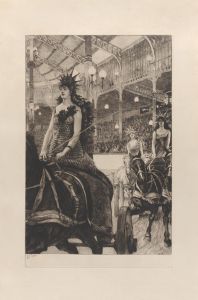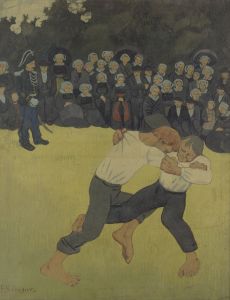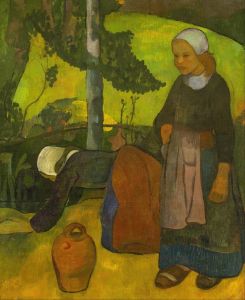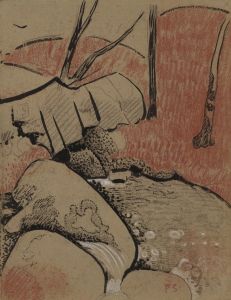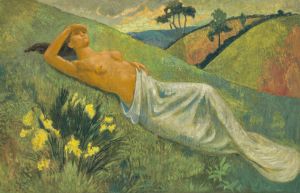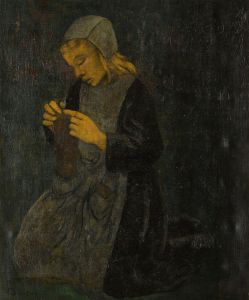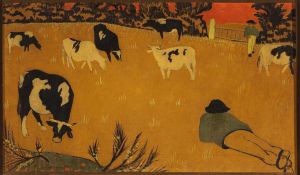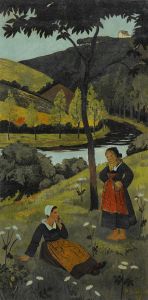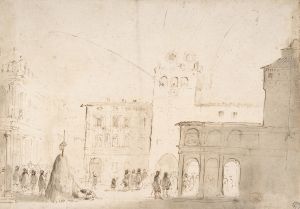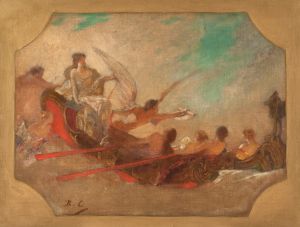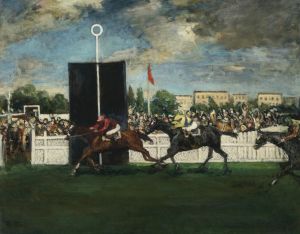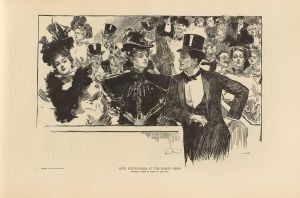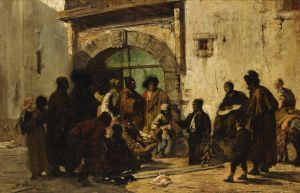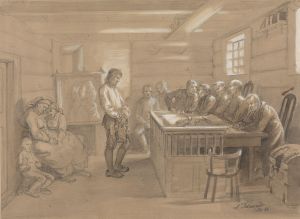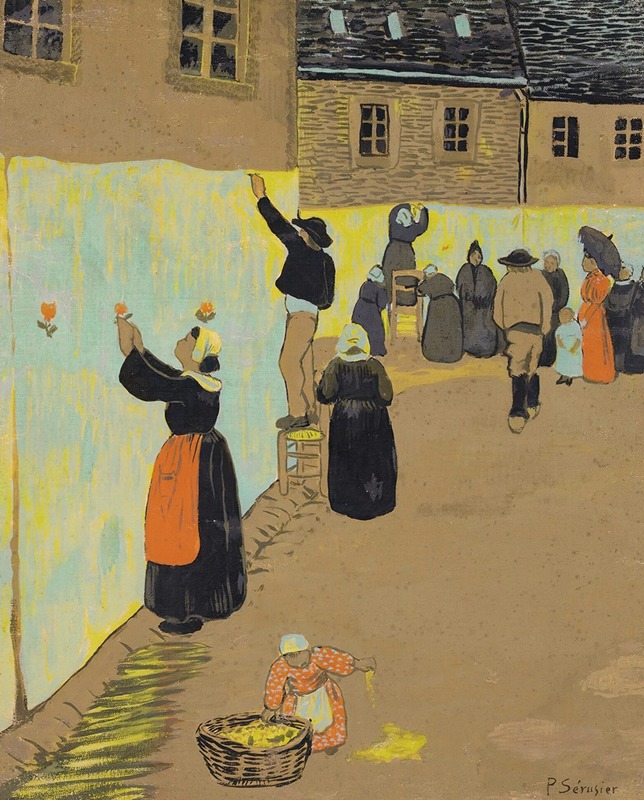
La Fête Dieu À Huelgoat
A hand-painted replica of Paul Sérusier’s masterpiece La Fête Dieu À Huelgoat, meticulously crafted by professional artists to capture the true essence of the original. Each piece is created with museum-quality canvas and rare mineral pigments, carefully painted by experienced artists with delicate brushstrokes and rich, layered colors to perfectly recreate the texture of the original artwork. Unlike machine-printed reproductions, this hand-painted version brings the painting to life, infused with the artist’s emotions and skill in every stroke. Whether for personal collection or home decoration, it instantly elevates the artistic atmosphere of any space.
"La Fête Dieu à Huelgoat" is a painting by the French artist Paul Sérusier, created in 1894. Sérusier was a prominent figure in the Post-Impressionist movement and a member of the Nabis, a group of avant-garde artists who sought to break away from traditional artistic conventions and explore new forms of expression.
The painting depicts the celebration of the Feast of Corpus Christi (Fête Dieu) in the town of Huelgoat, located in the Brittany region of France. This religious festival, which honors the Eucharist, is marked by processions and various communal activities. Sérusier's work captures the essence of this local tradition, providing a glimpse into the cultural and spiritual life of the Breton people.
In "La Fête Dieu à Huelgoat," Sérusier employs a vivid color palette and bold, simplified forms, characteristic of the Nabis' style. The composition is structured around the procession, with figures dressed in traditional Breton costumes. The use of flat areas of color and the emphasis on decorative patterns reflect Sérusier's interest in synthesizing elements of folk art with modernist techniques.
The painting is notable for its use of symbolism and its departure from naturalistic representation. Sérusier's approach was influenced by his mentor, Paul Gauguin, and the Symbolist movement, which sought to convey deeper meanings and emotions through art. The figures in the painting are stylized, and the landscape is rendered in a way that emphasizes its mystical and spiritual qualities.
"La Fête Dieu à Huelgoat" is an important example of Sérusier's work during this period and illustrates his commitment to exploring the spiritual and symbolic dimensions of art. The painting is housed in the Musée d'Orsay in Paris, which holds an extensive collection of works from the late 19th and early 20th centuries.
Paul Sérusier (1864-1927) was a key figure in the development of modern art in France. He studied at the Académie Julian in Paris and became associated with the Pont-Aven School, a group of artists who gathered around Gauguin in Brittany. Sérusier's work is characterized by its bold use of color, simplified forms, and a focus on the spiritual and symbolic aspects of art.
The Nabis, which means "prophets" in Hebrew, were a group of young artists who sought to create a new form of art that would go beyond the limitations of Impressionism. They were influenced by Gauguin's use of color and symbolism, as well as by Japanese prints and other non-Western art forms. The Nabis believed that art should be a means of expressing inner truths and emotions, rather than merely depicting the external world.
"La Fête Dieu à Huelgoat" exemplifies the Nabis' approach to art, with its emphasis on color, pattern, and symbolic content. The painting captures the spirit of the Breton festival, while also conveying a sense of the mystical and transcendent. It is a testament to Sérusier's skill as an artist and his ability to merge traditional themes with modernist techniques.
Overall, "La Fête Dieu à Huelgoat" is a significant work in the history of modern art, reflecting the innovative spirit of the Nabis and Sérusier's unique vision. It remains an important piece in the collection of the Musée d'Orsay, where it continues to be appreciated by art lovers and scholars alike.





